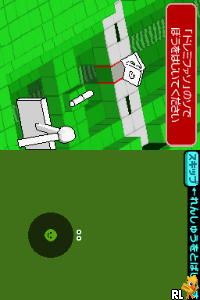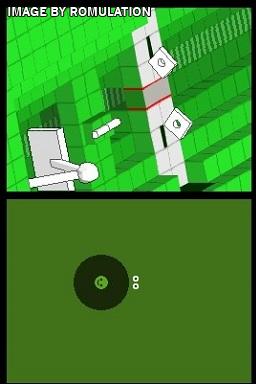
#Rhythm heaven ds rom the rom depot plus#
The technical specifications of the original Game Boy Advance are, as provided by Nintendo: SizeĪpproximately 145 mm (5.7 in) x 82 mm (3.2 in) x 24 mm (0.94 in) (WxHxD)Ģ.9 inch reflective thin-film transistor (TFT) color liquid-crystal display (LCD)Īpproximately 15 hours on average while playing Game Boy Advance games (varies depending on the Game Pak being played, volume setting and any external peripherals being used such as a screen light )ġ6.8 MHz 32-bit ARM7TDMI with embedded memory 8.388 or 4.194 MHz Sharp LR35902 ( 8080-derived) for Game Boy and Game Boy Color backward compatibilityģ2 kilobyte + 96 kilobyte VRAM (internal to CPU) 256 kilobyte DRAM (external to CPU)ġ5-bit RGB (5 bits depth per channel), capable of displaying 512 simultaneous colors in "character mode" and 32,768 (2 15) simultaneous colors in "bitmap mode"ĭual 8-bit DAC for stereo sound (called Direct Sound), plus all legacy channels from Game Boy. While not named, Joystiq concluded this device was most likely Project Atlantis.
(independent)-nintendo-ds_mini.jpg)
ĭuring a panel discussion at 2009's Game Developers Conference, a cancelled "Game Boy Advance predecessor" was shown on-screen, which looked like a bulky Game Boy Color. Nintendo suspended the Atlantis project sometime in 1997, since the original Game Boy's 80% of the handheld market share was considered too high to merit the release of a successor. In terms of software, it was announced that Nintendo of Japan was working on a game for the system called Mario's Castle, ultimately unreleased. Both were designed by Advanced RISC Machines (ARM), which also created the CPU for the Game Boy Advance (and all Nintendo handhelds until the Nintendo Switch). Electronic Gaming Monthly reported the processor to be an ARM710, clocked at 25 MHz, while Next Generation claimed it to be a StrongARM SA-110, possibly supporting 160 MHz. Although Nintendo's expectations of releasing the system in at least one territory by the end of 1996 would make that machine seem to be the Game Boy Color, it was described as having a 32-bit ARM processor, a 3-by-2-inch (7.6 cm x 5 cm) color screen, and a link port - a description that more closely matches the Game Boy Advance. In 1996, magazines including Electronic Gaming Monthly, Next Generation, issues 53 and 54 of Total!, and the July 1996 issue of Game Informer featured reports of a successor to the original Game Boy, codenamed Project Atlantis. Nintendo estimated that around 60 games would be made available for the system by the end of 2001. In March 2001, Nintendo revealed details about the system's North American launch, including the suggested price of $99.99 and the 15 launch games.

The GBA was then featured at Nintendo Space World 2000 from August 24 to 26 alongside several peripherals for the system, including the GBA Link cable, the GameCube - Game Boy Advance link cable, a rechargeable battery pack for the system, and an infrared communications adaptor which would allow systems to exchange data. On August 24, Nintendo officially revealed the console to the public in a presentation, revealing the Japanese and North American launch dates, in addition to revealing that 10 games would be available as launch games for the system. On August 21, 2000, IGN showed off images of a GBA development kit running a demonstrational port of Yoshi Story, and on August 22, pre-production images of the GBA were revealed in an issue of Famitsu magazine in Japan. Simultaneously, Nintendo announced a partnership with Konami to form Mobile 21, a development studio that would focus on creating technology for the GBA to interact with the GameCube, Nintendo's home console which was also in development at the time under the name "Dolphin". Nintendo teased that the handheld would first be released in Japan in August 2000, with the North American and European launch dates slated for the end of the same year. On September 1, 1999, Nintendo officially announced the Game Boy Advance, revealing details about the system's specifications including online connectivity through a cellular device and an improved model of the Game Boy Camera.

An improved version of the GBC with wireless online connectivity was codenamed the Advanced Game Boy (AGB), and a brand-new 32-bit system was not set for release until the following year. News of a successor to the Game Boy Color (GB/GBC) first emerged at the Nintendo Space World trade show in late August 1999, where it was reported that two new handheld systems were in development.

The Game Boy Advance was designed by the French designer Gwénaël Nicolas and his Tokyo-based design studio Curiosity Inc. Contrary to the previous Game Boy models, which have the "portrait" form factor of the original Game Boy (designed by Gunpei Yokoi), the Game Boy Advance was designed in a "landscape" form factor, putting the buttons to the sides of the device instead of below the screen.


 0 kommentar(er)
0 kommentar(er)
